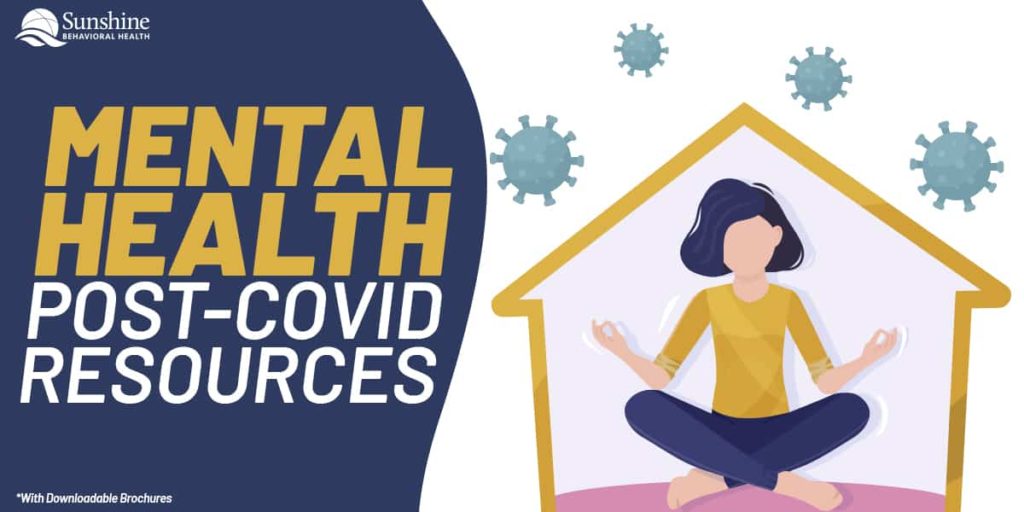A lot has changed since the World Health Organization declared the outbreak of the novel coronavirus-caused COVID-19 a global pandemic on March 11, 2020.
Since then COVID-19 has killed millions and sickened hundreds of millions around the world.
Lockdowns and safety measures have kept many of us out of the workplace or classroom for months or longer. That’s affected our mental health.
For some, the isolation has fuelled anxiety and depression. For others, the prospect of returning to the workplace is a major source of stress.
Since the vaccines have appeared to reduce cases and deaths, life has in some respects and in some places has begun to return to normal.
Mental Health
The pandemic has not only affected our physical health but our mental health, too. Throughout COVID-19 people struggled (and continue to struggle) with uncertainty, isolation, and grief.
Mental health issues can lead to other problems, including co-occurring disorders, such as when mental illness and addiction coexist. Left untreated, such disorders can result in many long-term health problems, risky behaviors, and reduced work quality.
COVID and Unemployment
Hiring slowed in early 2021 (even as more positions opened) as some found they didn’t want to return to the same jobs for the same pay. Lack of benefits kept others away. Some struggled with balancing childcare and work.
Others were hesitant because they didn’t feel it was safe to return to normal.
Signs of Stress
Stress affects nearly everyone and can result from anything. The uncertainties of the pandemic (financial woes and health fears) supercharged it for a lot of people.
Merriam-Webster defines stress as “a physical, chemical, or emotional factor that causes bodily or mental tension.” While it’s normal to experience stress, too much can pose risks to both physical and mental health.
Common symptoms of stress include:
- Nervousness, anxiety
- Apathy, indifference
- Annoyance, irritation
- Sadness, depression
- Sleep troubles
- Struggling to concentrate
- Headaches, stomach troubles, skin rashes, and pain
- Changes in appetite, personality, and appearance, and/or a lack of interest or difficulty in getting day-to-day things accomplished are also signs that stress is starting to take a toll.
Effects of Stress
The effects of stress are well-documented. (And while a tiny bit can be good, activating our fight-or-flight syndrome and helping us survive dangerous situations, a lot is bad for you.)
Apart from anxiety or headaches, stress can also lead to less visible (but even more troubling) problems such as high blood pressure and a diminished immune system. Mental health can take a hit, too, worsening conditions such as anxiety and depression.
It can’t always be avoided, but stress can to some extent be better managed. Mindset, preparation, and communication are three ways to approach workplace or classroom jitters. Some healthy routines can be helpful too.
Managing Everyday Stress
Accepting that stress is a part of our lives (to an extent) can help somewhat.
Maintaining a healthy daily routine is good for mental health. It’s a wise idea to focus on the things you can do, the things you can control. Making your bed and getting dressed every morning — these are day-to-day things a person can do that can make a difference in keeping up one’s spirits, especially if they’re still working or studying from home.
Other tips include:
- Keep connected; reach out to others.
- Fit in regular exercise.
- Eat a balanced diet.
- Limit TV time or social media exposure.
- Stick to the facts and avoid misinformation and hysteria when it comes to the coronavirus.
- Do things to protect yourself and your loved ones. That can include getting vaccinated or wearing masks around groups of people.
- Relax and do things you enjoy outside of work (hiking, biking, reading, painting).
- Practice mindfulness: meditation or yoga can help with anxiety, depression, high blood pressure, and other issues.
- Avoid substance use; if you drink, practice moderation.
- Keep up with treatment if you have a physical or mental health condition.
Many people have returned to work, or will in the weeks and months to come. The pandemic is still evolving, however, so we don’t know the outcomes.
Whether COVID-19 is eradicated one day remains unclear. One thing that is certain, however, is more pandemics will come. History has proven that. We may face shutdowns again, as well as the uncertainty, anxiety, and stress that follows.
We can’t steer the outcomes, but we can take care of our mental health.


